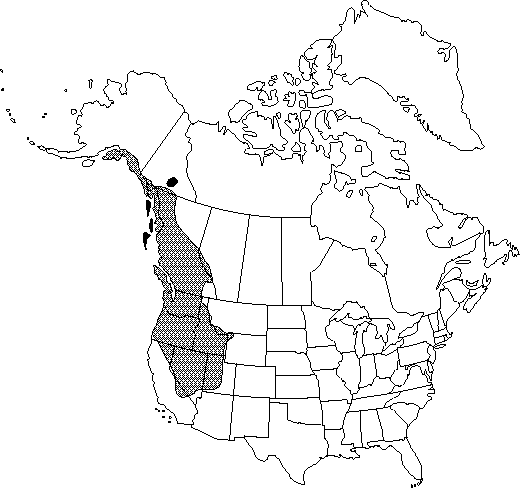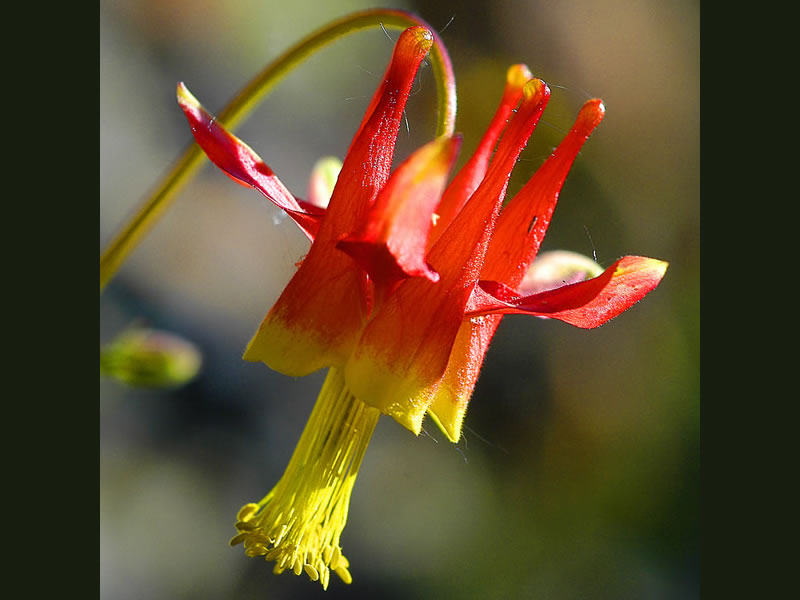Aquilegia Express: Red Columbines
Aquilegia formosa, western columbine
The western columbine occurs from coastal Alaska south through the Yukon Territory, British Columbia and adjacent Alberta to Washington, Oregon, Idaho, Montana, California, Nevada and Wyoming.
 A swallowtail butterfly taking a sip of nectar from Aquilegia formosa and in the process pollinating the flower. Notice how the butterfly’s thorax comes in contact with both the stamens and stigma. Photo by Joanne Baggs.
A swallowtail butterfly taking a sip of nectar from Aquilegia formosa and in the process pollinating the flower. Notice how the butterfly’s thorax comes in contact with both the stamens and stigma. Photo by Joanne Baggs.
 Range map of Aquilegia formosa var. formosa. Also see range maps for var. hypoplasia and var. truncata. Courtesy of Flora of North America.
Range map of Aquilegia formosa var. formosa. Also see range maps for var. hypoplasia and var. truncata. Courtesy of Flora of North America.
Aquilegia formosa ranges in height from 30 to 100 cm. The stems are pubescent above with the leaves glabrous or pubescent on either surface. The flowers are nodding. The sepals are red, 10 to 25 mm long, and perpendicular. The blades are yellow, very short, 2 to 6 mm long. The spurs are red, 10 to 20 mm long and straight. The stamens extend beyond the blades.
Aquilegia formosa is found growing in moist areas in forests, woodlands, alpine and subalpine meadows.
 In this close-up image of Aquilegia formosa, note the very short yellow blades. Photo by John O’Neill.
In this close-up image of Aquilegia formosa, note the very short yellow blades. Photo by John O’Neill.


